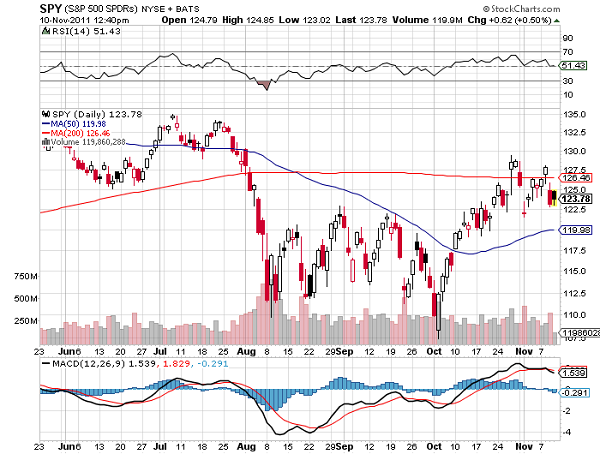The importance of having a diversified portfolio can not be understated. The strategy of investing in a mix of industries and sectors to protect your investments has traditionally been the cornerstone of managing long-term investment portfolios, and the advice has been the mantra of professional money managers, financial writers, and TV personalities for decades.
While it is certainly sound advice to diversify your investments, the implementation of diversification in your investment portfolio can present a variety of challenges to the average retail investor. The challenges to building a diversified portfolio can present investors with roadblocks to achieving their investing goals, and failure to understand these impediments can lead to the devastating loss of money in the market.
For many people, the main challenge to building a well diversified portfolio is the lack of necessary funds to purchase the many different stocks and bonds needed to properly diversify. A strategy of picking individual stocks and bonds means that an individual investor would ideally hold a minimum of ten different securites within their portfolio.
This can become costly considering both the cost-per-share as well as commissions and broker fees that add up with every transaction. There is also the added element of keeping up with each and every stock and sector, monitoring the business and well as the over all market environment, and trading accordingly. For most people, the time commitment alone is difficult if not impossible to make, and without constant monitoring, this strategy could lead to unexpected losses.
There is also the added issue of a little thing called stock picking, and the very real possibility of choosing wrong. Unfortunately, the majority of investors are terrible stock-pickers, as is proven by the astonishing (and discouraging) statistic that 95% of investors will fail in the market! A statistic that is not easy to ignore.
A Diversified Portfolio Is Within Reach
The answer for many investors when building a diversified portfolio is to look to exchange traded funds, commonly referred to as ETFs. ETFs track a specified index such as the S&P 500 or the Dow Jones Industrial Average, to name two, and allow investors to purchase in some cases hundreds of stocks in one ETF.
These investment instruments trade on an exchange like a stock, offer low fees and commissions, and many of them pay dividends. ETFs can allow you to gain broad market, sector or country-specific exposure for your diversified portfolio using as few as five ETF holdings.
While ETFs certainly simplify the diversification process, they are not without drawbacks as well. Some sector or country-specific ETFs may trade on lower volume, be more volatile than you may be comfortable with, and/or involve complicated strategies to realize profits that may carry additional risk to your capital.
ETFs still require an amount of due diligence prior to investing, and a portfolio comprised of entirely ETFs still requires consistent monitoring in order to realize profits.
Five ETFs For A Diversified Portfolio

When building a diversified portfolio with ETFs it is a good idea to start with an age-appropriate mix of index and bond funds, with the most popular being the SPDR S&P 500 (SPY) and the SPDR Dow Jones Industrial Average (DIA) which track the S&P 500 and the Dow Jones Industrial Average respectively.
Especially in the case of older investors, a bond fund such as iShares Barclay Aggregate Bond (AGG), should also be considered to add an element of stability to your portfolio in times of market volatility. An older investor may not have the resources to ride out the market’s volatile short-term swings, and a bond fund, while certainly uninspiring, will definitely not keep you awake with worry.
You may also wish to consider an ETF that focuses on dividend paying companies such as the SPDR S&P Dividend (SDY). The SDY tracks the S&P 500’s dividend aristocrats, companies with a strong history of high-paying stable dividends.
You may also wish to add ETFs to your portfolio to capitalize on market trends while limiting risk. If you believe a tech rally is on the horizon a technology ETF such as First Trust Dow Jones Internet Index Fund (FDN) will help you gain exposure to top-tier internet players such as Google, which comprised more than 10% of its portfolio.
ETFs can also prove to be an excellent way to mitigate risk in an emerging market play. There are several emerging market ETFs to choose from with Global X Russell Emerging Market Growth ETF (EMGX) and Global X Russell Emerging Market Value ETF (EMVX). Both are excellent funds for you to consider for this type of investment.
Always review a funds holdings, investment objective, management, and dividend yield to make sure that is the right fit for your long term investment goals. While no strategy is fool proof, for a long-term investment strategy ETFs can help you realize gains, minimize risk, and ultimately help you build real and lasting wealth in the stock market.
Comments (No)